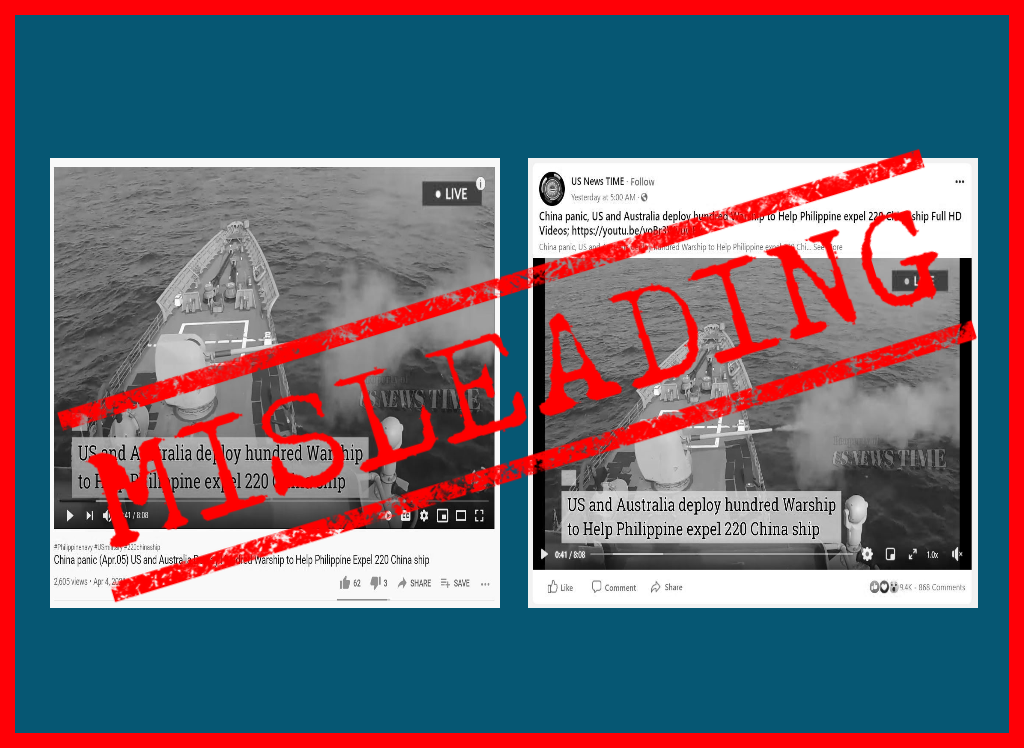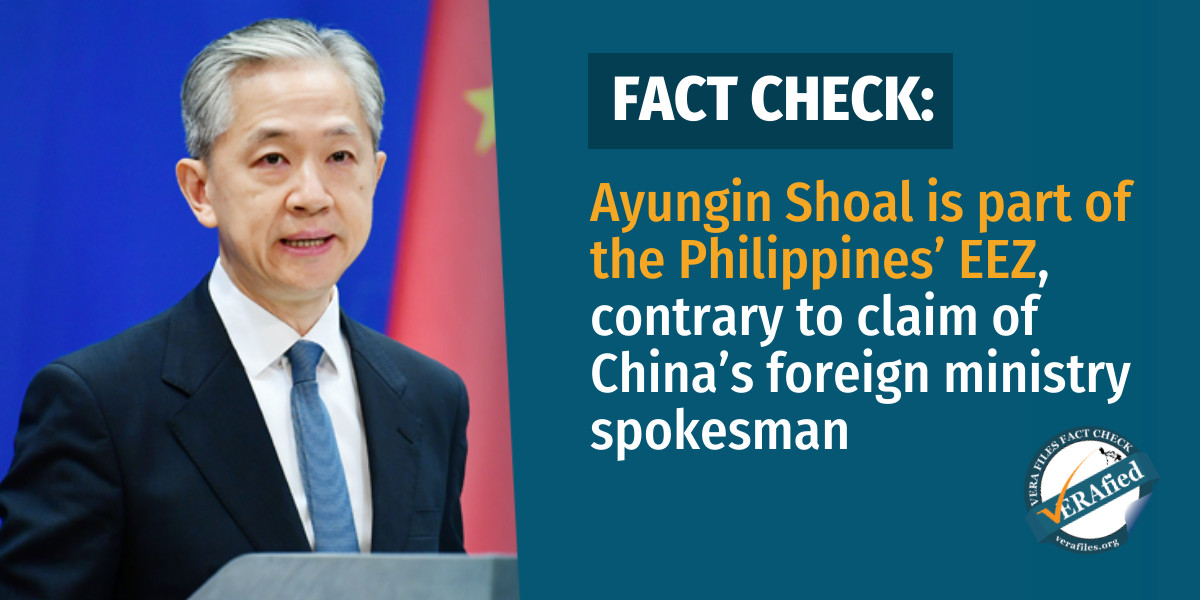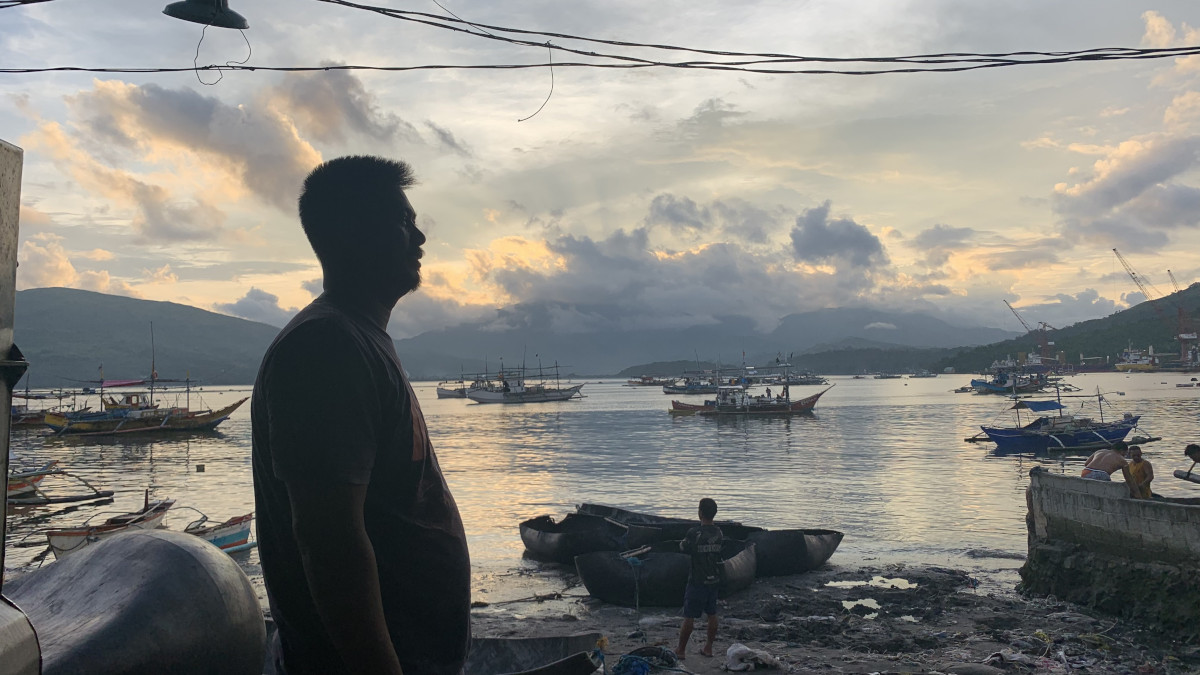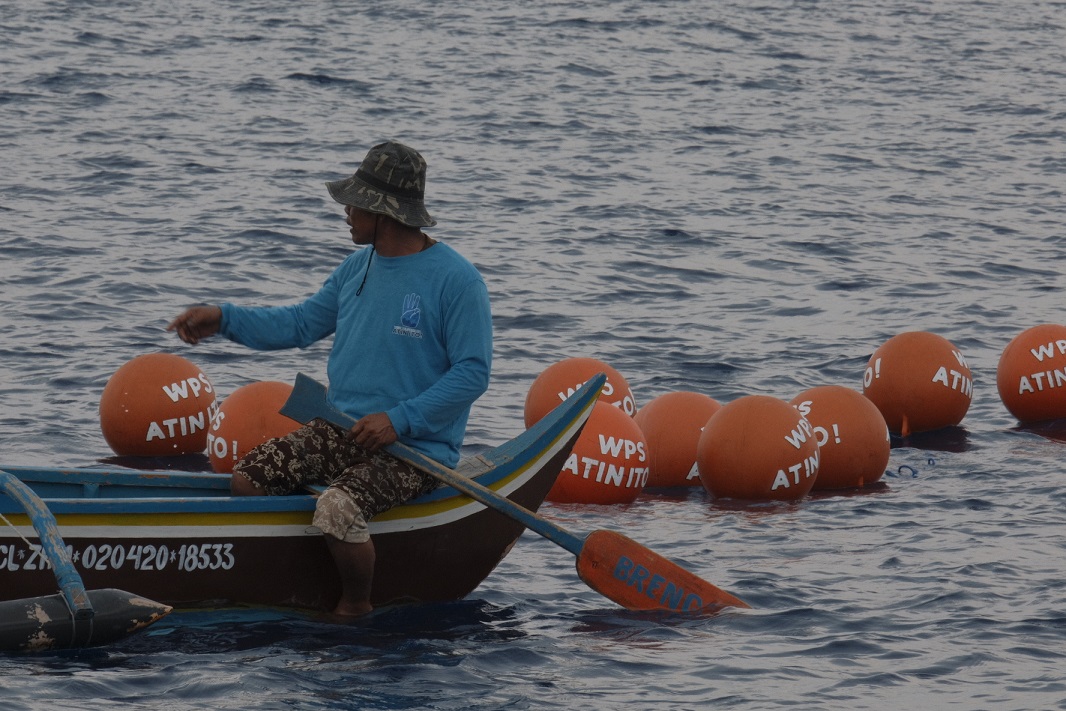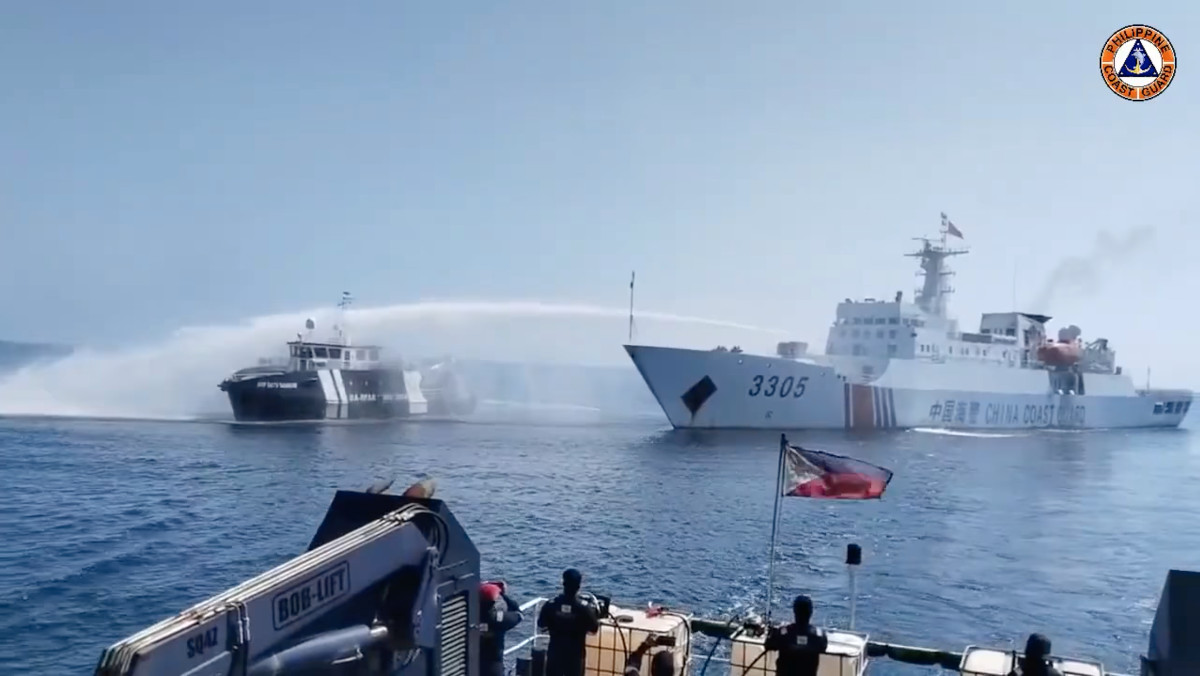
Fishermen from Zambales, particularly those in the coastal waters near Scarborough Shoal, are uncertain whether they should set sail every day due to the imminent danger posed by foreign vessels, primarily Chinese patrols.
The Chinese maritime militia, in coordination with the Chinese Coast Guard and the China People’s Liberation Army and Navy, has been harassing and engaging in heated radio exchanges with Filipino fishermen when they get close to Scarborough Shoal.
Also known as Bajo de Masinloc, Scarborough Shoal is located 124 nautical miles (NM) (229.65 kilometers) west of Masinloc town in Zambales and is within the 200 nautical-mile exclusive economic zone (EEZ) and Philippine continental shelf.
In contrast, it is approximately 472 NM (874.14 km) from the nearest coast of China, which calls the shoal as Huangyan Dao.
Scarborough Shoal is a triangular-shaped coral reef formation which has several rocks encircling a lagoon, making it a place for refuge for fishermen during stormy weather. Hence the other name for it, Panatag, which means calm in Filipino.
The name Scarborough Shoal came from the tea-carrying British boat Scarborough, which sank in the vicinity in 1784.
2012 incident turns situation for worse
Scarborough Shoal is a traditional fishing ground for the Filipino, Chinese and Vietnamese fishermen as well as those of other nationalities.
However, tensions began in April 2012 when China retaliated against the Philippine Navy’s attempt to arrest Chinese fishermen in eight fishing vessels anchored in the waters of the shoal and found to have illegally collected endangered giant clams, corrals and live sharks. Chinese maritime surveillance ships blocked the Philippine vessels.
Interviews with fishermen in Masinloc town always mention 2012 as the year when their situation changed.
Before April 2012, the Philippines had control over Scarborough Shoal as part of its EEZ and continental shelf. Chinese, Taiwanese and Vietnamese fishermen were a common sight in the area. They were allowed to catch fish there most of the time; but sometimes, they got apprehended for illegal fishing, and their respective embassies were notified. The embassy staff would facilitate their release and send them back to their respective countries.
That incident on April 8, 20212 drastically changed the situation. The attempted arrest of the Chinese fishermen led to a three-month standoff between Chinese vessels, which numbered more than 80, against four Philippine vessels.
The standoff was broken after intense negotiations that involved the United States. Almost all of the fishing boats by the Chinese were withdrawn, except three coast guard ships. Since then, China has never relinquished control of Scarborough Shoal, compelling the Philippines to file a case against China before the Permanent Court of Arbitration in The Hague on Jan. 22, 2013. China did not participate in the arbitration.
On July 12, 2016, the Arbitral Court rendered its decision in favor of the Philippines. It declared null and void China’s historical claims and its nine-dash line map.
China’s island base-building on Spratlys and harassment of Filipino fishermen
China avenged its loss in the Arbitral Court by turning shoals and rocks into man-made islands and garrisons.
It also intensified its harassment of Filipino fishermen when they got near the shoal.
Fishermen from Masinloc reveal the harsh realities, leading to the emergence of the “Scars of Scarborough.”
Fishermen recall various incidents of Chinese aggression, including the taking of their catch and exchanging those with expired goods, posing health risks. Some recall incidents, such as their boats being rammed, which create perilous situations.
Media reports highlight the methods used by Chinese forces, including the firing of water cannons, ramming smaller ships, using military-grade lasers and employing a high-powered Long-Range Acoustic Device (LRAD) on Filipino vessels.
The Philippine Coast Guard encourages local fishermen to continue operating in Scarborough Shoal and the West Philippine Sea despite the Chinese presence. The removal of a Chinese-installed barrier at Bajo de Masinloc in September 2023 prompted warnings from China, but the Philippines keep on asserting its rights and asking China to respect international rulings.
Chinese Foreign Ministry spokesperson Wang Wenbin warned the Philippines “not to provoke or stir up trouble.”
Commodore Jay Tarriela, PCG spokesperson for WPS matters, has affirmed cooperation with the Bureau of Fisheries and Aquatic Resources and the Armed Forces of the Philippines to sustain patrols and restore access to the lagoon.
“It’s the intention of the government to encourage more Filipino fishermen to fish at Bajo de Masinloc (local name for Scarborough) and in other areas in the West Philippine Sea,” Tarriela had said in an interview.
Tarriela acknowledges successful efforts to anchor close to Scarborough Shoal, emphasizing the need for continued strategic actions.
Meanwhile, Wenbin has reiterated China’s stand that “Huangyan Dao is China’s inherent territory. China has indisputable sovereignty over the island and its adjacent waters. China exercises sovereignty and jurisdiction over Huangyan Dao in a continuous, peaceful and effective manner.”
He asserted China’s historical version: “The territory of the Philippines is defined by a series of international treaties, including the 1898 Treaty of Peace between the United States of America and the Kingdom of Spain, the 1900 Treaty between the United States of America and the Kingdom of Spain for Cession of Outlying Islands of the Philippines, and the 1930 Convention between His Majesty in Respect of the United Kingdom and the President of the United States regarding the Boundary between the State of North Borneo and the Philippine Archipelago. Huangyan Dao is beyond the limits of Philippine territory. It is inconsistent with international law for the Philippines to claim sovereignty over Huangyan Dao on the grounds of its comparative proximity to Philippine territory, or claim sovereign rights and jurisdiction on the grounds that Huangyan Dao is within the Philippine exclusive economic zone.”
In response, National Security Adviser Secretary Eduardo Año said: “China’s repeated claims of sovereignty over Bajo de Masinloc has no basis in international law or in fact. International law is clear. China cannot, therefore, lawfully exercise sovereignty over it. As clearly stated by the 2016 arbitral award, UNCLOS superseded any ‘historic rights’ as claimed by China.” He was referring to the United Nations Convention on the Law of the Sea. “China cannot claim entitlements in areas of the ‘nine-dashed line,’ now ’10-dashed line,’ that exceed UNCLOS limits,” he added.
Wenbin keeps reiterating China’s non-recognition of the 2016 Arbitral Court decision: “China does not accept or recognize it, and will never accept any claim or action based on the award. China’s sovereignty and rights and interests in the South China Sea shall under no circumstances be affected by the illegal award.”
Reducing tensions
The escalation of tension in the South China Sea has worried other members of the Association of Southeast Asian Nations (ASEAN), of which the Philippines is a founding member.
At the 8th Philippines- China Bilateral Consultation Mechanism (BCM) on the South China Sea Last Jan. 17 in Shanghai, China’s Assistant Foreign Minister Nong Rong and Philippine Foreign Affairs Undersecretary Maria Theresa P. Lazaro agreed “to de-escalate the situation in the South China Sea and… to calmly deal with incidents, if any, through diplomacy.”
The official statement also saiud the two officials agreed to further improve the maritime communication mechanism, continue to properly manage maritime disputes and differences through friendly consultation, properly handle maritime emergencies, in particular, the situation on the ground at Ren’ai Jiao (Ayungin Shoal), and constantly promote practical maritime cooperation, so as to create favorable conditions for the sound and stable development of China-Philippines relations.”
Despite diplomatic talks, it remains to be seen if the “Scars of Scarborough” will heal anytime soon.
(This special report was produced under VERA Files’ project on enhancing the media’s capability to raise public awareness of the situation in the South China Sea, funded by the Government of Canada through its Canada Fund for Local Initiatives. #CanadaFundPH
A different version of this article has appeared in the Manila Standard. Vince Lopez is a reporter for The Manila Standard.)

